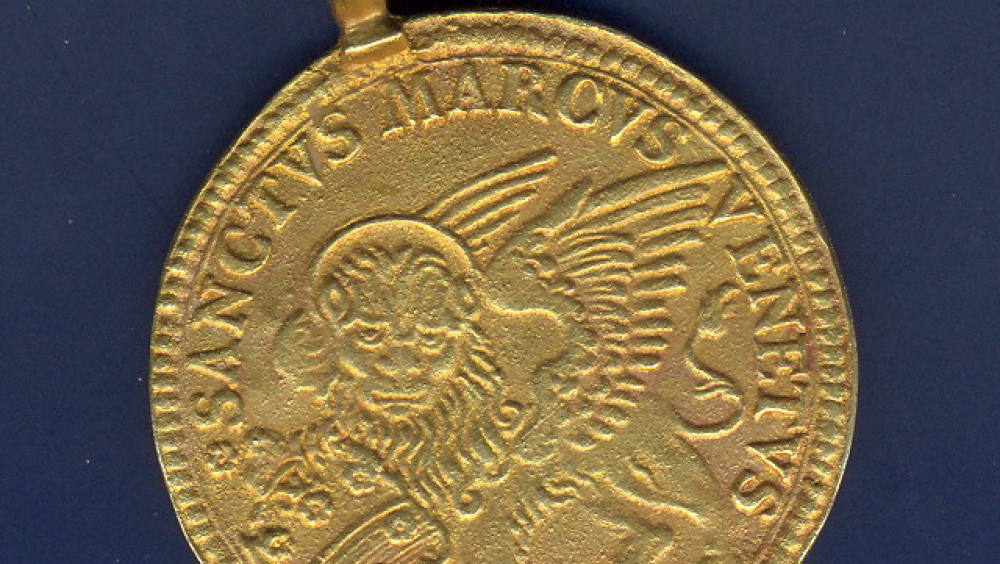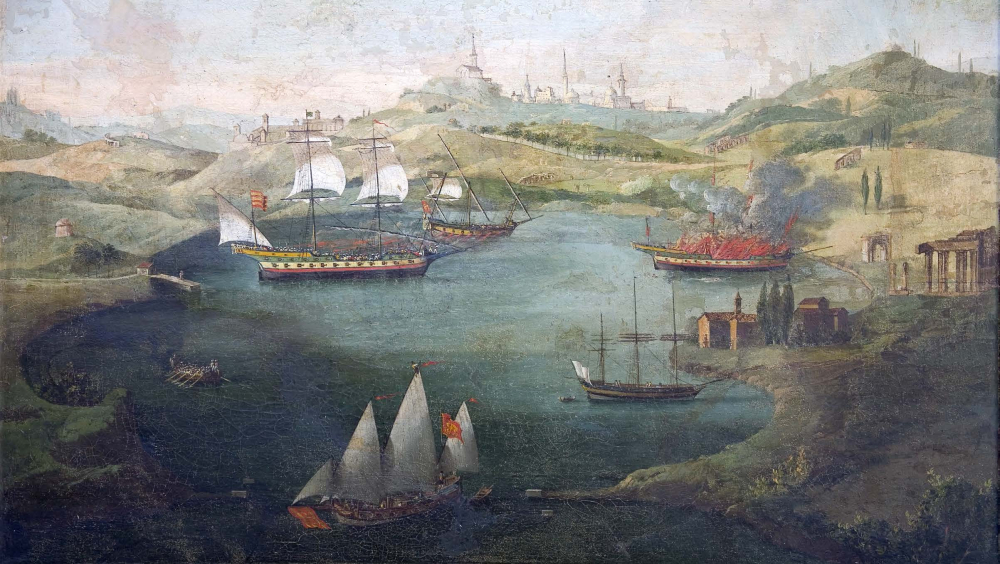The 1756 naval battle between the Ivanović brothers from Dobrota and pirates in the port of Piraeus depicted in comics.
April 19, 2025, will mark 269 years since the triumph of the brothers and sea captains, Marko and Josip Ivanović from Dobrota, over the notorious pirate of that era, Hadži Ibrahim of Kandia.
Despite facing a challenging and disadvantageous situation, being outnumbered and armed with inferior weapons, the Ivanovic brothers triumphed in a seven-hour battle, during which Marko Ivanovic lost his life, achieving a decisive victory over the Turks
The motive for their travels in the Mediterranean, which is ship trading, is the subject of the second part that the reader will face.The comic then moves on to discuss maritime hazards, among which pirates pose the greatest threat aside from natural hazards.
The heroes of our story had their own ships - tartans, and the Turkish pirates had shambeks - in this way, the future reader gets a clear picture of the appearance of the sailing ships of that time as well as their purposes.
The following are topics related to sailing and the skills of our sailors, but also the skills of pirates. The story ends with a battle between the Dobrota people and the Turkish pirates, during which all weapons used by the ships at that time, the strategies used in combat, and the result of the actual conflict are displayed and explained.
The message of the narrative is complex and goes beyond a straightforward portrayal of a single battle. It shows how the weak defeated the powerful, the righteous defeated the unjust, and—most importantly—how this battle was a sign of faith and a response to the sailors' prayers at that era.
For the first time in Montenegro, the event will be recounted using the ninth art form—comic books— to depict the naval battle.
April 19, 2025, will mark 269 years since the triumph of the brothers and sea captains, Marko and Josip Ivanović from Dobrota, over the notorious pirate of that era, Hadži Ibrahim of Kandia.
Despite facing a challenging and disadvantageous situation, being outnumbered and armed with inferior weapons, the Ivanovic brothers triumphed in a seven-hour battle, during which Marko Ivanovic lost his life, achieving a decisive victory over the Turks. The residents of Dobrota seized a Turkish silk alaibarjak from the Turkish shambek, which had been gifted to the pirate Reisuh Aji Ibrahim by the Sultan of Constantinople. This trophy of the renowned battle was preserved in the church of St. Eustacia in Dobrota. On August 17, 1756, Josip Ivanović is named a "knight" (cavalier) of Saint Mark, which was the highest Venetian award for similar heroic deeds (this decoration was preserved in the City Museum – Museo Civico e Raccolta Correr in Venice, as the only surviving example).
On April 26, 1756, Count Anastasia Messala, the Venetian consul in Patras, reported to Jerolim Querin, the providor general "da mar," regarding the remarkable victory achieved by the Ivanović brothers and the Venetian Senate on April 28, 1756. In a letter dated May 18, 1756, General Providur "da mar" Jerolim Querini sent the Patras consul's report to the Venetian Senate, commending and extolling the heroism of the Ivanović brothers.
An age and a method of maritime commerce are reflected in the tale of the Ivanović brothers' naval war. The comics' future reader learns a great deal about the second half of the 18th century through this scenario. The reader initially learns about the traders and seamen from the eastern Adriatic coast and Boka Bay. The commanders of the sailing ships are the primary participants, but the entire crew is also participant in this drama. The motive for their travels in the Mediterranean, which is ship trading, is the subject of the second part that the reader will face. It is very interesting that the goods and items that were transported by sea at that time, such as cheese, leather, wax, dried meat, etc., are mentioned. The comic then moves on to discuss maritime hazards, among which pirates pose the greatest threat aside from natural hazards.
The heroes of our story had their own ships - tartans, and the Turkish pirates had shambeks - in this way, the future reader gets a clear picture of the appearance of the sailing ships of that time as well as their purposes.
The following are topics related to sailing and the skills of our sailors, but also the skills of pirates. The story ends with a battle between the Dobrota people and the Turkish pirates, during which all weapons used by the ships at that time, the strategies used in combat, and the result of the actual conflict are displayed and explained. All those dramatic moments of the fight are the central part of the comic book and the largest number of pages will be devoted to them.
The comic goes deeper into the battle's epilogue, which consists of the honors our story's protagonists received for their heroic defense against more experienced pirates.
The message of the narrative is complex and goes beyond a straightforward portrayal of a single battle. It shows how the weak defeated the powerful, the righteous defeated the unjust, and—most importantly—how this battle was a sign of faith and a response to the sailors' prayers at that era.
For the first time in Montenegro, the event will be recounted using the ninth art form—comic books— to depict the naval battle. Because comics are verbo-visual—that is, they blend language and image— they are a medium that has been around for more than a century. We are confident that a story presented in this format would help promote our unique maritime heritage by making it available to people across the globe. Comics offer a variety of communication goals and as one of the most widely used and approachable mediums for artistic expression, comics are essential for children's growth in both creativity and critical thinking. Comics are the ideal medium for developing artistic literacy and creativity in a society where visual communication dominates.
The basic idea of the comic is the use of drawings to tell a tale and link the story—in this example, a naval battle—with images.
This tale is based on historical evidence, including artifacts and archive papers, and is not a work of fiction.
Realization of the project would be helped by experts from this field, which would include the development of scenarios, drawing, coloring, then drawings and their coloring on the cover, subsheet and other places where there is no comic, typing text, design and press.
The naval battle of the Ivanović brothers from Dobrota with pirates in 1756 in the port of Piraeus is actually a part of the European maritime past. It is part of the thousand-year history of the Republic of Venice, which shaped the history of the Mediterranean with its influence. This story can be seen as the epilogue of one of the biggest naval battles in the world, i.e. the Battle of Lepanto from the 16th century. Although this battle has significantly less impact, the actors of the fight are the same: Christian centers on the Adriatic on one side and Ottoman claims to the Adriatic Sea on the other. Every event from the history of the Mediterranean has shaped the current Europe and its values, and in that we see the expediency of this project.
The magnitude of this endeavor is reflected in the fact that customs and tariffs were applicable to marine trade throughout this time.
Our suggested narrative not only honors the winners but also demonstrates the desire of the inhabitants from the Adriatic's eastern coast to establish a position for themselves in that era's society.
This kind of publication leads us to the conclusion that in the 18th century, they were a part of European ideals, commerce flows, and ethics of living. The Eastern Adriatic is currently undergoing a period of development, with a tendency toward integration and reform.
The European Heritage Day stories help us link individuals, communities, and nations, foster better understanding between them, inspire us in the present, teach us about the past, and help us live with the legacy that we must protect.

